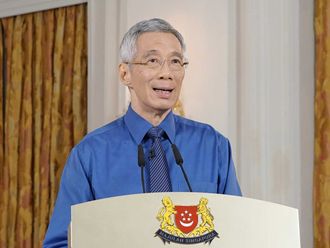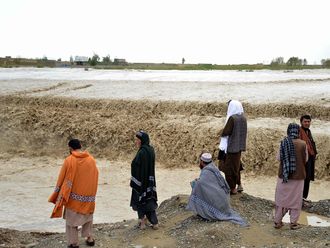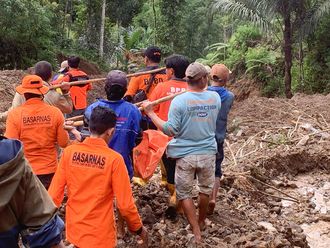BANGKOK: The deaths of seven ethnic Rakhine Buddhists in Myanmar’s north has cast fresh light on the complex swirl of religious and ethnic tensions in one of the country’s poorest and most troubled regions.
Rakhine state usually makes the news because of the Rohingya, a stateless Muslim minority who have fled to Bangladesh in an army crackdown against insurgents that has been classified as ethnic cleansing.
But most of the population in the state is ethnic Rakhine, a group whose grievances are a key part of the conflict but often go unheard.
Who are the Rakhine?
Like nearly 90 per cent of Myanmar’s population, the Rakhine people are Buddhist, but a shared faith masks deeper divides.
Unlike the Rohingya Muslims who live in the same state, the Rakhine are recognised by the government as an ethnic group but are often marginalised under a system that favours the dominant Bamar (Burmese).
Like other ethnic groups, they harbour long-standing grievances against the central government that date back to British colonial rule, but the 18th century subjugation of their own kingdom by the Burmese has also not been forgotten.
A deadly riot on Tuesday in Mrauk U occurred on the anniversary of the fall of the kingdom.
“Mrauk U is the former capital of the kingdom of Arakan so it is an area where autonomist, regionalist claims are strong,” said Alexandra De Mersan, an expert from the French School of Oriental Studies.
There are around two million Rakhine — twice as many as the Rohingya before their recent exodus.
Why are they clashing with security forces?
Communal violence between Rakhine Buddhists and Rohingya Muslim communities has deep roots and pivots on a dispute over who belongs in the state.
But Rakhine antipathy towards the government and the Burmese military is also strong. Civilian leader Aung San Suu Kyi is not as popular in the state as she is in the rest of the country.
While the world’s attention has focused on attacks by Rohingya insurgents, security forces have been fighting Rakhine rebels in a nearly decade-long war that has gone largely unnoticed outside Myanmar.
An AFP tally from Myanmar media reports indicates that the Arakan Army, the main rebel group, killed scores of members of the security forces from late 2015 to late 2016.
“It would not be unreasonable to speculate that AA cadres or supporters might have been involved in whipping up a protest that turned violent fairly quickly,” security analyst Anthony Davis said of Tuesday’s clash.
What’s the impact on the Rohingya?
The riot occurred just days before Myanmar and Bangladesh are slated to begin repatriating some of the hundreds of thousands of Rohingya Muslim refugees who fled last year.
Observers are worried the recent violence may morph into fresh tensions between Rakhine and Rohingya — and complicate the return process.
The repatriation deal covers more than 750,000 Rohingya who have fled over the border to Bangladesh.
“Things can get mixed up,” Oo Hla Saw, a lawmaker with the Arakan National Party. “Hatred and incitement could increase as well,” he told AFP.
— AFP












